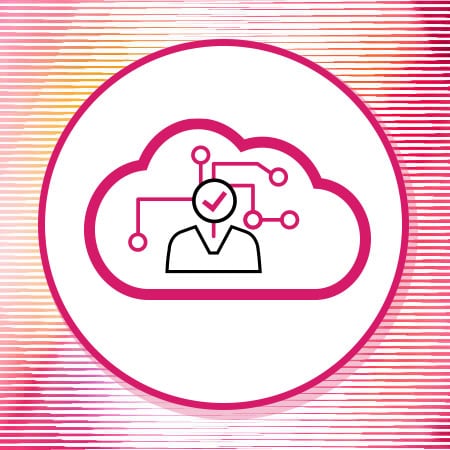What is Cloud Infrastructure Entitlement Management (CIEM)?
Cloud Infrastructure Entitlement Manage (CIEM) solutions automate the process of managing user entitlements and privileges in cloud environments. This makes them an integral part of an organization’s identity and access management and cloud security posture management (CSPM) infrastructure. With CIEM, organizations can more effectively address the challenges of implementing consistent access controls and zero trust policies across multi-cloud deployments.

Why CIEM is Necessary
Over the past few years, cloud usage has exploded. Companies are moving their data and applications to cloud-based infrastructure, and, in most cases, are deploying these resources across multiple cloud platforms.
As cloud deployments grow and become more complex, the number of entitlements required to implement access control across these platforms grows as well. The principle of least privilege states that users, applications, and systems should have the minimum set of permissions necessary to do their jobs. The least privilege is a central tenet of the zero trust security model and is essential for minimizing the attack surface of the corporate cloud and an attacker’s ability to move laterally and achieve their objectives within an organization’s cloud-based infrastructure.
Implementing least privilege means right-sizing entitlements of all identities, resources and services, across all cloud platforms. Manually managing these entitlements across multiple cloud infrastructures and thousands of permissions, actors, and resources is infeasible and unscalable.
Existing tools such as privileged access management (PAM) and identity governance administration (IGA) solutions do not have the granularity required to secure access at the resource level. The native tools offered by cloud service providers are helpful, but they are not mature, granular, or effective at scale and do not offer support across multiple providers’ platforms.
Benefits of CIEM
A CIEM solution makes it simpler for organizations to implement the least privilege in their entitlements across multiple cloud platforms. Some of the major benefits that a CIEM provides include:
- Visibility: A CIEM provides an organization with visibility into its cloud entitlements. This helps an organization to more effectively monitor and manage access control in cloud environments.
- True Cross-Cloud Correlation: CIEM solutions aggregate user, device, and application identities across an organization’s entire cloud deployment. This makes it easier to implement consistent access control policies and provides a unified audit trail across environments.
- Intelligent Correlation and Insights: CIEM solutions can analyze user behavior and assign permissions for trends. This can help define groups for similar users, identify cases where separation of duties may be advisable, and implement best practices, such as implementing least privilege, within an organization.
- Automation: CIEM solutions can be configured to automatically take action in certain scenarios. For example, automation can be used to enforce corporate security policies by enforcing requirements for multi-factor authentication (MFA), limiting certain permissions to users with a particular role, etc.
Choosing the Right CIEM Solution
The right CIEM solution makes cloud entitlement management easy and intuitive. Some vital features include:
- Discovery: CIEM solutions should offer discovery of every identity, human or non-human, and resources as well as all account activity. Additionally, they should analyze all policy types and have support for federated and native identities.
- Cross-Cloud Correlation: CIEMs are designed to simplify entitlement management in the modern multi-cloud environment. This requires native and user-friendly support across cloud platforms.
- Visibility: Visibility is essential for understanding complex entitlement relationships. A CIEM should offer a graph view mapping identities to resources, the ability to query entitlements via a natural query language, and a metrics dashboard allowing an organization to track entitlement usage, user behavior, etc.
- Entitlement Optimization: A CIEM should analyze entitlements to determine if certain entitlements are unused, overused, etc. This can help to inform a more efficient and optimized entitlement policy.
- Entitlement Protection: CIEM solutions should offer entitlement protection in the form of entitlement detection and remediation. Anomalous and potentially dangerous entitlements should be automatically identified and remediated via tickets or automated response.
- Threat Detection and Response: User and entity behavioral analytics (UEBA) should be integrated into a CIEM solution. Anomalous activities should generate a SIEM alert and be automatically analyzed to detect potential trends.
- Security Posture Analytics: Cloud entitlements should be based on industry best practices, standards, and relevant regulations. A CIEM should automatically evaluate policies against these requirements and generate gap assessments and recommendations.
Entitlement Logging and Reporting: Access logs are essential for regulatory compliance and incident response. A CIEM should generate comprehensive, consistent logs and templated reports for regulatory reporting.
CIEM with Check Point
Check Point CloudGuard provides built-in CIEM functionality as part of its CSPM solution. Learn more about CloudGuard’s capabilities with a free demo. You’re also welcome to try it out for yourself with a free trial of CloudGuard
